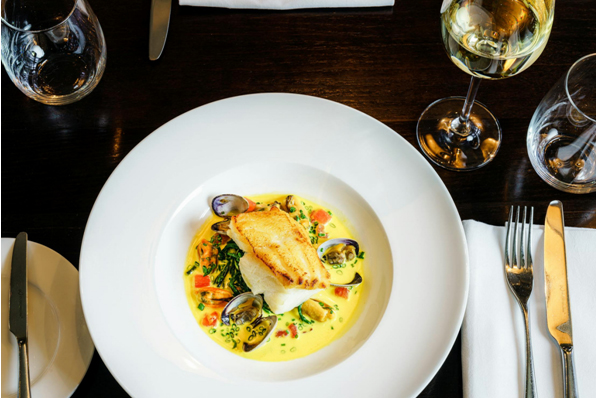Ah, London. The culinary capital where Michelin stars twinkle brighter than the Thames at sunset, and where a new food trend pops up faster than a flash mob in Oxford Circus. But, with the cost of living biting harder than a sourdough crust, and whispers of economic uncertainty swirling like steam from a Borough Market coffee, is 2025 really the year to throw your hat (and your hard-earned cash) into the restaurant ring? Let’s dive fork-first into the realities.

“London’s dining scene is a relentless beast. You either adapt, innovate, or become a forgotten footnote.” – Victor Garvey, The Midland Grand.
The allure is undeniable. London’s dining scene remains a vibrant, ever-evolving beast. From the white tablecloth elegance of Mayfair to the gritty, experimental kitchens of Hackney, the city offers a canvas for culinary dreams. The sheer diversity of palates and the constant influx of tourists ensures a potential market that’s as vast as the Circle Line. But, as any seasoned restaurateur will tell you, potential doesn’t pay the rent.
The elephant in the room, of course, is the economy. Inflation, though showing signs of cooling, has left a lasting scar on consumer spending. Diners are becoming increasingly price-sensitive, opting for mid-week set menus over extravagant tasting experiences. The cost of ingredients, energy, and, crucially, staff, continues to climb, squeezing profit margins tighter than a London Tube carriage at rush hour.
Then there’s the competition. London is a saturated market, to say the least. Every street corner seems to boast a new eatery, each vying for attention in the crowded social media landscape. Standing out requires more than just good food; it demands a compelling narrative, a unique selling point, and a social media presence that could rival a Kardashian’s.
“You’ve got to be more than just good at cooking. You’ve got to be a strategist, a marketer, a psychologist – and a bloody good accountant. It’s not just about the love of food anymore, it’s about survival.” – Chris, The Mitre, Richmond.
But it’s not all doom and gloom. Opportunities abound for those who are willing to adapt and innovate. The rise of experiential dining, where food is just one element of a multi-sensory experience, presents a chance to create something truly memorable.1 Pop-ups and residencies offer a lower-risk entry point for budding chefs, allowing them to test concepts and build a following without the burden of a long-term lease.2
Sustainability is no longer a buzzword but a necessity. Diners are increasingly conscious of their environmental impact, demanding locally sourced ingredients, minimal waste, and ethical practices. Restaurants that embrace sustainability not only tap into a growing market but also contribute to a more responsible food system.3
Technology is also reshaping the dining landscape. Online ordering, delivery services, and digital marketing are now essential tools for reaching customers. Restaurants that leverage technology effectively can streamline operations, enhance customer experience, and expand their reach beyond their immediate neighbourhood.4
The rise of the “casual fine dining” concept is also a notable trend. Diners crave high-quality food and attentive service but without the stuffiness and exorbitant prices of traditional fine dining. This presents an opportunity for restaurants to offer a premium experience in a relaxed and accessible setting.
However, the question remains: Is it a good time to invest? The answer, as always, is nuanced. It’s a gamble, no doubt, but one with the potential for significant rewards for those who are willing to play their cards right.
Firstly, location remains king. Finding a prime spot with high foot traffic and a favourable demographic is crucial. Secondly, a strong brand identity is essential. In a sea of restaurants, a clear and compelling brand story can make all the difference. Thirdly, a focus on operational efficiency is paramount. Controlling costs, managing inventory, and optimizing staffing are key to profitability. And finally, a relentless commitment to quality and innovation is non-negotiable.
“We find that people are still looking for that feeling of community, that warmth, that sense of belonging. Good food and good vibes will always find an audience.” – Bistro Freddie, Shoreditch.
So, is 2025 the year to feast or fold? It depends on your appetite for risk, your ability to adapt, and your willingness to embrace the ever-changing landscape of London’s dining scene. If you’re armed with a killer concept, a solid business plan, and a dash of entrepreneurial spirit, then perhaps, just perhaps, you can carve out your own slice of the London culinary pie.
The truth is, London’s restaurant scene will always be a high-stakes game. The rewards, however, can be immense. For those who can navigate the challenges, 2025 could be the year they serve up a resounding success. But, be warned, this is a marathon, not a sprint. It’s a relentless grind, demanding resilience, creativity, and a whole lot of passion. Only the truly dedicated will survive, and maybe, just maybe, thrive.
Why not read about the latest UK property investment opportunities with our dedicated guide?
